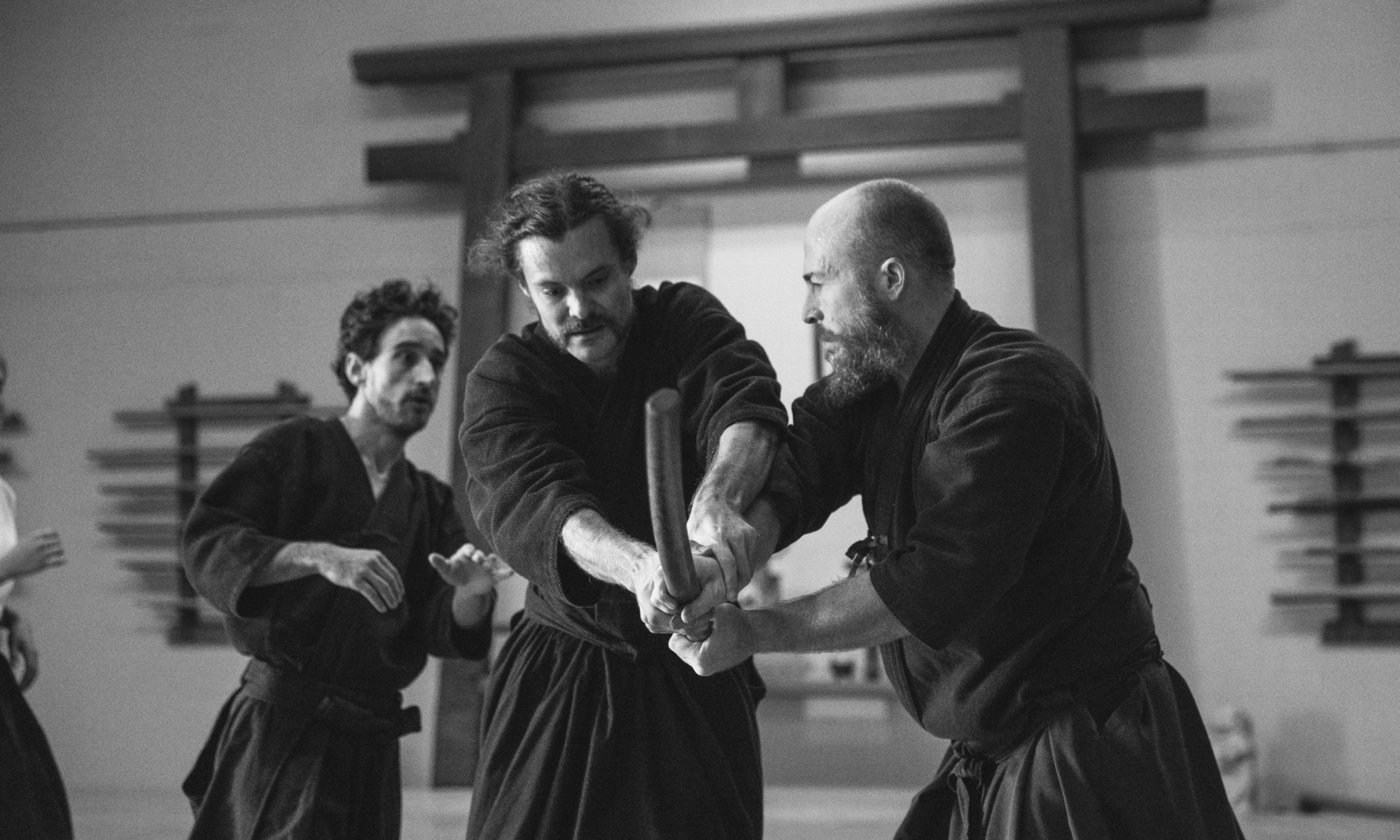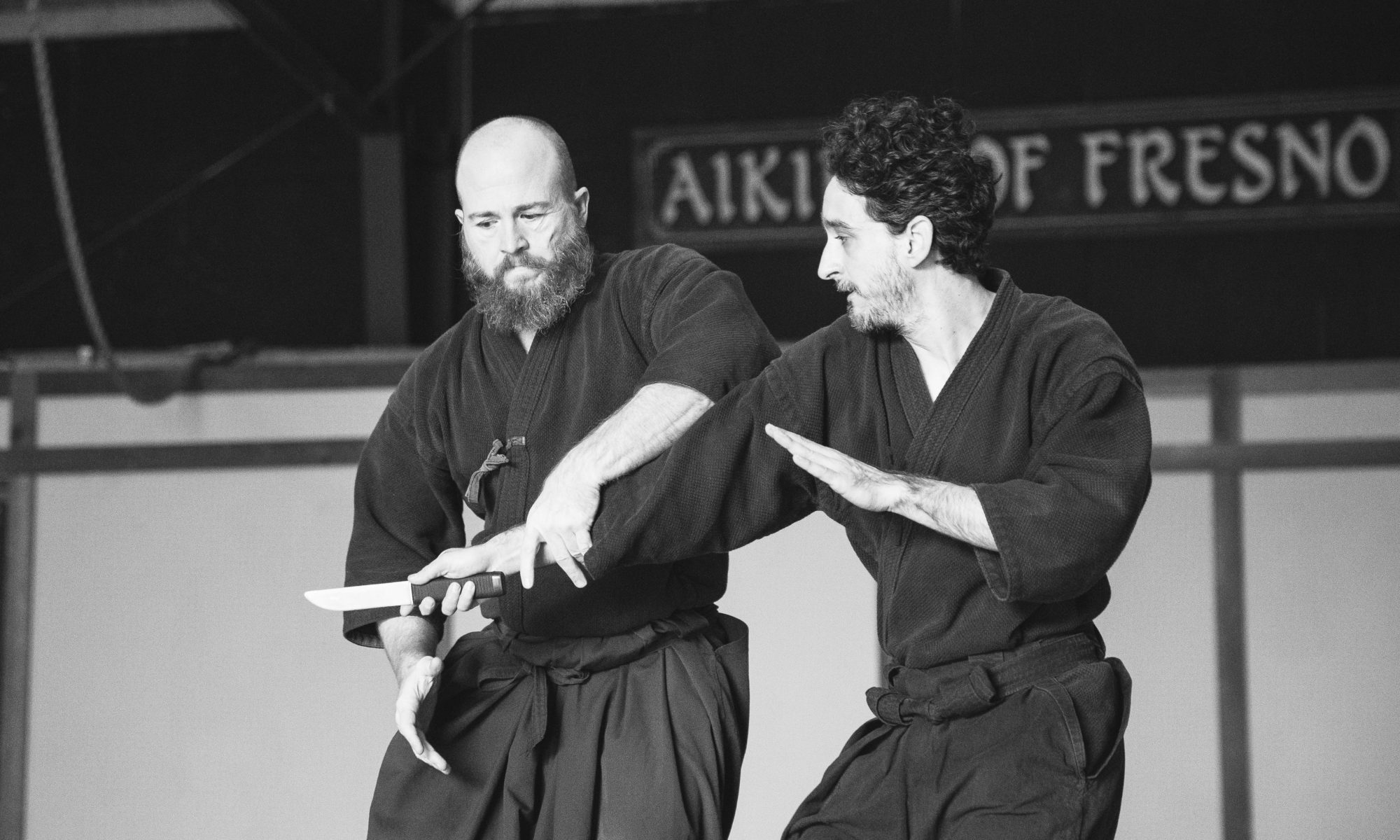To duel or not to duel: that is the question!
Recently, more and more members of the Aikido community have been asking questions about Aikido’s effectiveness as a martial art system. As someone who makes his living as an Aikido professional and has competed in MMA, BJJ, Sub-Wrestling and HEMA, I can tell you flat out- The Aikido community is starting to look in the wrong places for answers.
I started Aikido in the late 90’s. Aikido was quite popular then. Steven Seagal was a box office hit and MMA was just starting out. In short- people were intrigued by Aikido. Fast forward to today: Aikido is a little known martial art, Steven Seagal has revealed himself to be a less-than-ideal representative of our system, and MMA is clearly the most popular “martial art”. After years of neglect, it seems like those who were responsible for continuing the Aikido tradition- and were too busy enjoying the spoils of Aikido success in its heyday- have finally started to worry about how the world sees Aikido. Many want to know how Aikido “works” and if it is indeed an effective system of martial arts training.
If you’ve read my past posts you probably know, I’m a big fan of clarifying terms. If you ask me if something “works” the first thing I’ll ask you is- “what do you want it to work at?” While this might seem like a silly question to ask- this question is right at the heart of the problem with the general Aikido community. Aikido practitioners at the high level have for years worried more about the money their Dojo is making than about the preservation and development the art they expound. Years of neglect has put the Aikido community well behind the pack of popular martial arts systems. Now that it’s hitting us in the pocketbook, many of these figurative heads of the Aikido-state are being forced to realize that the modern person seeking martial arts training wants to know how Aikido works, and the answers they have just aren’t cutting it!
I have been seeing lots of blog posts and videos recently that show Aikido as “ground grappling” or how “Ikkyo works from a clinch,” for example. These are very interesting ideas to the current generation of Aikido practitioners. It is interesting because they know from decades of MMA and BJJ popularity that ground fighting and other MMA or BJJ style fighting “works”. They log on to Youtube and see MMA and BJJ practitioners putting their techniques to use against fully resisting opponents. They can see how these systems “work”. Unfortunately, the old Aikido guard has been too preoccupied with making a buck or gaining popularity. Now that systems like MMA or BJJ are gaining popularity, many Aikido schools are trying to retrofit our system and cash in on this new trend. They are trying to sell Aikido as something it’s not and was never meant to be. They are trying to sell Aikido as a dueling system.
What is a duel?
A duel is a one-on-one struggle, held between two people in order to decide who is “better” or “right”. If you think of an old timey story where one guy slapped another and said “I challenge you to a duel”, you understand the concept. Dueling is what one-on-one sport competition is. An MMA match is a duel, a BJJ match is a duel, a boxing match is a duel, Kendo and of course Olympic fencing is also dueling. When people want to gauge themselves and their skill they will often use a duel as their test. When you see a video titled “MMA v.s. Aikido” or “BJJ v.s. Boxing” you are seeing videos of duels. Modern sport systems are designed for dueling. Judo matches are throwing duels, Muay Thai is a kickboxing duel, BJJ is a grappling duel, et cetera. These duels are what I would call symmetrical physical conflict. Symmetrical conflict is when two parties struggle against each other with the same victory and defeat goals. For example, in Judo if you throw me, you win, if I throw you I win, if either of us is thrown we lose. In Boxing, if I knock you out or make you stop I win, if you knock me out or make me stop I win. This equality of goals is what draws us to duels and gives us the idea that the winner in a duel is the more skilled of the two.
An important question for us to ask ourselves as Aikido practitioners is: “is Aikido a dueling system?” If Aikido is not a dueling system, should we try to force it to be one because all the other “effective” systems we know of (BJJ, Kickboxing, Judo etc.) are dueling systems? I believe this is what the old-guard of Aikido is now doing, in an attempt to promote their own popularity and increase their revenue. Instead of trying to make Aikido into a dueling art as is the current vogue, we should better seek to understand what our art is.
“I tried Hozoin-ryu sojutsu and kendo. But all of these arts are concerned with one-to-one combat forms and they could not satisfy me.”- Morihei Ueshiba
(http://aikidojournal.com/2016/09/24/interview-with-morihei-ueshiba-and-kisshomaru-ueshiba/)
The founder of our system can be quoted as saying one-on-one systems were not satisfactory to him. To me, this alone is strong evidence that Aikido was not meant to be a dueling system. While Mochizuki Sensei was teaching in Europe, he had many opportunities to spar with local wrestlers and boxers. Upon returning to Japan and speaking with O-Sensei, Mochizuki Sensei told Ueshiba that the techniques of Aikido were not enough to defeat the boxers and wrestlers. Aikido needed a larger syllabus in order to deal with these kinds of fighters. Ueshiba was unconcerned with this, and told Mochizuki Sensei that he was missing the point of Aikido training. (paraphrased from Pre-war Aikido masters, Stanley Pranin, Aikido Journal)
We can see from this that pitting sport martial arts (dueling martial arts) directly against Aikido is not a new thing, but happened in the lifetime of the founder. He was well aware of the dueling arts of the time, yet he was unconcerned with developing a system of dueling to deal with these kinds of styles. Why?
One could take all this to mean that Aikido has a deeper spiritual meaning beyond winning and losing a duel. I personally would agree with this. But does having this spiritual aspect mean that we can’t have practical skill? As a practitioner of dueling martial arts, I can tell you that there is WAY more to practical martial training than a duel. In fact, I tell my self defense students (people who come to me for only pragmatic self defense skills) that dueling is detrimental to their self defense skills. If we are speaking of practical self defense, learning only how to duel can be very dangerous!
Are there examples of practical martial skill that has nothing to do with dueling? If we take someone like an Army Ranger (a U.S. elite infantry soldier), I think few would argue that an Army Ranger has practical martial skills. Does this mean that Army Rangers are great at dueling arts like Judo, Boxing, BJJ and MMA? If an Army Ranger decided to enter an amateur boxing match would he be great at boxing because of his training in the Army? Army Rangers training involves very little boxing and wrestling, so it is likely that most Rangers won’t fare that well in amateur boxing, wrestling or MMA (unless they had previously trained in those things on their own). Why is it that the U.S. Army is not concerned with the fact that Army Rangers are not expert at dueling arts like boxing or wrestling? If you told Colonel Brandon Tegtmeier (current head of Ranger regiment) that his Rangers are not the best boxers and wrestlers and that more boxing and wrestling training should be added to their program, what do you think he would say? Much like Ueshiba, he’d probably shrug and say that you’re missing the point of Ranger training. Practical skill for a Ranger doesn’t mean being a great duelist. I think you can understand that world class skill in something like light infantry tactics doesn’t give you world class skills in other fighting arts like boxing or wrestling. Similarly, skills in a asymmetrical physical conflict system like Aikido won’t give you special skills in symmetrical systems (dueling systems) like MMA.
Let me explain further. One of the main things Aikido is known for is its handling of multiple attacker situations. The founder was often seen in video showing attacks from multiple attackers. In order to best handle multiple attackers you can not spend a lot of time squaring up with one attacker and dueling with them to find out who is best. You can’t do this because while you are involved in your duel, the other attacker is coming to get you! You must adopt a system of movement and allowance, you must allow the attacker to come at you as in a way that they think is beneficial, while you lead that energy back at them. This is another common Aikido concept, to let them defeat themselves. Again it might sound like I’m speaking of mystical special powers, but understanding the power of asymmetrical conflict can help us understand how this works.
If we compare martial arts and sports, Aikido is much more akin to football or bull fighting than it is to boxing or wrestling. Boxing and wrestling are both symmetrical conflict (dueling) systems. Symmetrical conflict systems function on the basic assumption that we have the same win criteria and same loss criteria. An asymmetrical conflict, however, involves us both having different win criteria. If a bullfighter’s victory could only be achieved by him running at the bull and smashing the bull, there would be no bullfighters left alive. Instead, the bull fighter allows the bull to rush at him, and moves away safely, not contesting the bulls strength with his own, but instead letting the bull tire himself, all the while allowing the bull to work into a poor position. This is when the bull fighter strikes. Similarly, in football, if the running back tried to tackle the defensive ends that were trying to tackle him, he would be a very poor running back. His job is to run to the goal line, not tackle people. He achieves victory by moving, not by fighting. In this kind of action we often see running backs make those trying to tackle him fall down of their own volition. He uses their desire to attack (tackle him) against them. This is the power of asymmetry, and Aikido technique abounds in it!
If Aikido is not a dueling art and there is evidence to prove that it was never meant to be, why should we try to force it to be one simply because dueling is in vogue at the moment? Perhaps this is because we cannot be bothered to understand a martial art system that is not about a duel. To think that martial arts only exist in the world of one-on-one, identically goal-oriented individuals is to narrowly understand the concept of conflict.

